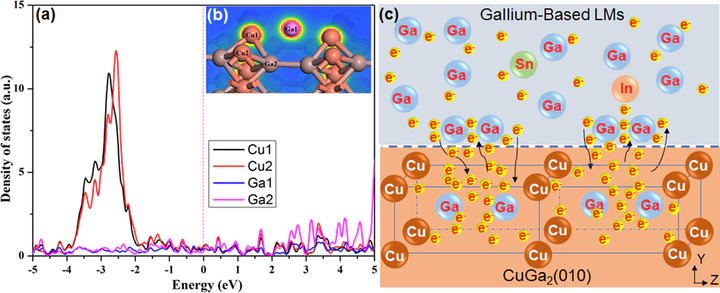Metallic Bond Enabled Wetting Behavior at the Liquid Ga/CuGa2 Interfaces

Abstract
Interface interaction can strongly modify contact angle, adsorption energy, interfacial tension, and composition of the contact area. In particular, the interfaces between gallium-based liquid metal (LM) and its intermetallic layer present many mysterious and peculiar wetting phenomena, which have not been fully realized up to now. Here in this study, we found that a gallium-based liquid metal droplet can quickly transform into a puddle on the CuGa2 surface through a spreading–wetting procedure. The mechanism lying behind this phenomenon can be ascribed to the formation of an intermetallic CuGa2 on Cu plate surface, which provides a stable metallic bond to induce the wetting behavior. For a quantitative evaluation of the interface force, a metallic bond-enabled wetting model is established on the basis of the density functional theory. The first-principles density functional calculations are then performed to examine the work function, density of states, and adsorption energy. The predicted results show that the work function of CuGa2 (010) is approximately 4.47 eV, which is very comparable with that of pure liquid Ga (4.32 eV). This indicates that the valence electrons between Ga and CuGa2 slab can exchange easily, which consequently leads to the strong valence electron hybridization and metallic bond. In addition, the adsorption energy of a single Ga atom on CuGa2 (010) slab has a larger value than In and Sn. The tested metallic bond wetting force at the interface is proportional to the average adsorption energy of the gallium-based LM adatom, and increases with the rising content of gallium. The simulation results demonstrate excellent consistency with the experimental data in this work.